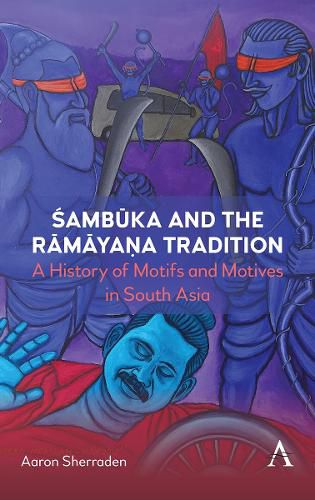Readings Newsletter
Become a Readings Member to make your shopping experience even easier.
Sign in or sign up for free!
You’re not far away from qualifying for FREE standard shipping within Australia
You’ve qualified for FREE standard shipping within Australia
The cart is loading…






According to Valmiki’s Sanskrit Ramayana (early centuries CE), Sambuka was practicing severe acts of austerity to enter heaven. In engaging in these acts as a Sudra, Sambuka was in violation of class- and caste-based societal norms prescribed exclusively by the ruling and religious elite. Rama, the hero of the Ramayana epic, is dispatched to kill Sambuka, whose transgression is said to be the cause of a young Brahmin’s death. The gods rejoice upon the Sudra’s death and restore the life of the Brahmin. Subsequent Ramayana poets almost instantly recognized this incident as a blemish on Rama’s character and they began problematizing this earliest version of the story. They adjusted and updated the story to suit the expectations of their audiences. The works surveyed in this study include numerous works originating in Hindu, Jain, Dalit and non-Brahmin communities while spanning the period from Sambuka’s first appearance in the Valmiki Ramayana through to the present day. The book follows the Sambuka episode chronologically across its entire history-approximately two millennia-to illuminate the social, religious, legal, and artistic connections that span the entire range of the Ramayana’s influence and its place throughout various phases of Indian history and social revolution.
$9.00 standard shipping within Australia
FREE standard shipping within Australia for orders over $100.00
Express & International shipping calculated at checkout
According to Valmiki’s Sanskrit Ramayana (early centuries CE), Sambuka was practicing severe acts of austerity to enter heaven. In engaging in these acts as a Sudra, Sambuka was in violation of class- and caste-based societal norms prescribed exclusively by the ruling and religious elite. Rama, the hero of the Ramayana epic, is dispatched to kill Sambuka, whose transgression is said to be the cause of a young Brahmin’s death. The gods rejoice upon the Sudra’s death and restore the life of the Brahmin. Subsequent Ramayana poets almost instantly recognized this incident as a blemish on Rama’s character and they began problematizing this earliest version of the story. They adjusted and updated the story to suit the expectations of their audiences. The works surveyed in this study include numerous works originating in Hindu, Jain, Dalit and non-Brahmin communities while spanning the period from Sambuka’s first appearance in the Valmiki Ramayana through to the present day. The book follows the Sambuka episode chronologically across its entire history-approximately two millennia-to illuminate the social, religious, legal, and artistic connections that span the entire range of the Ramayana’s influence and its place throughout various phases of Indian history and social revolution.